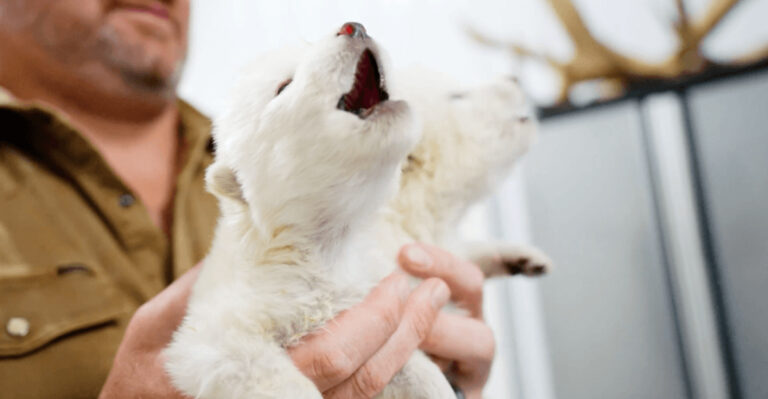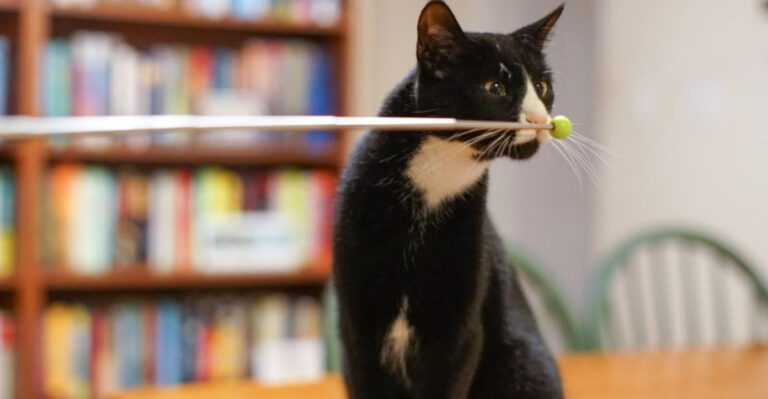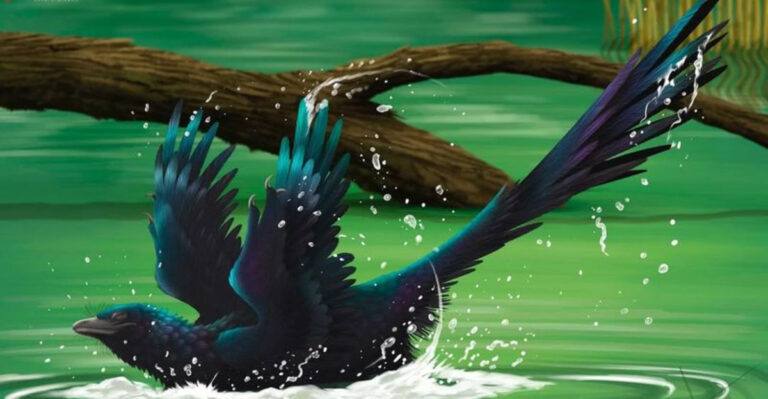10 Fascinating Nocturnal Animals You’ll Rarely Spot In Daylight
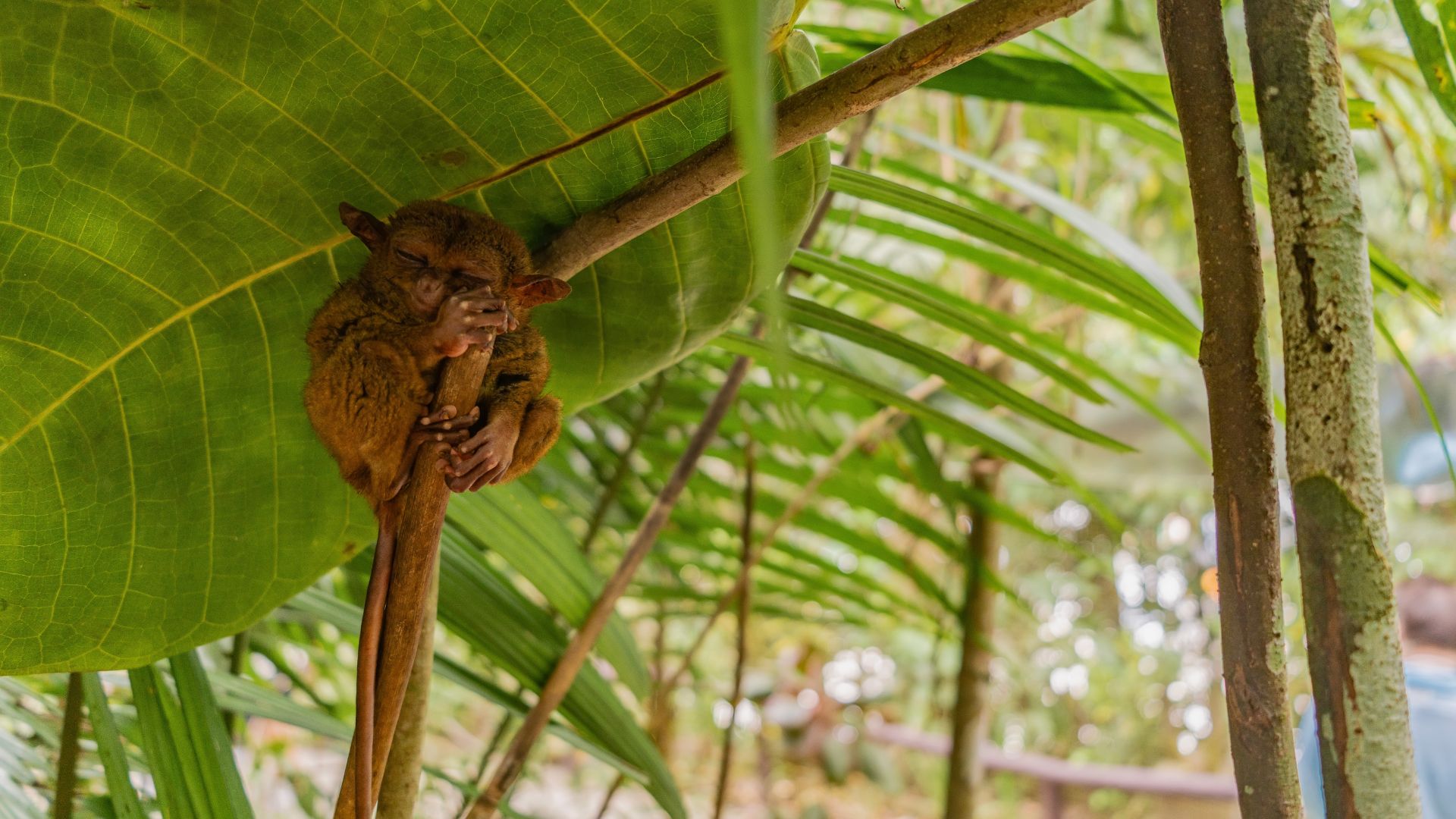
The night has its own fascinating cast of characters – animals that thrive under the cover of darkness and seem to vanish when the sun rises.
While most of us are winding down, these nocturnal creatures are just starting their day (or should we say night).
Let’s take a closer look at some of these mysterious night-dwellers and uncover why they rarely make daytime appearances. Spoiler alert: they’re way cooler than you might think.
1. Bats Navigate The Night
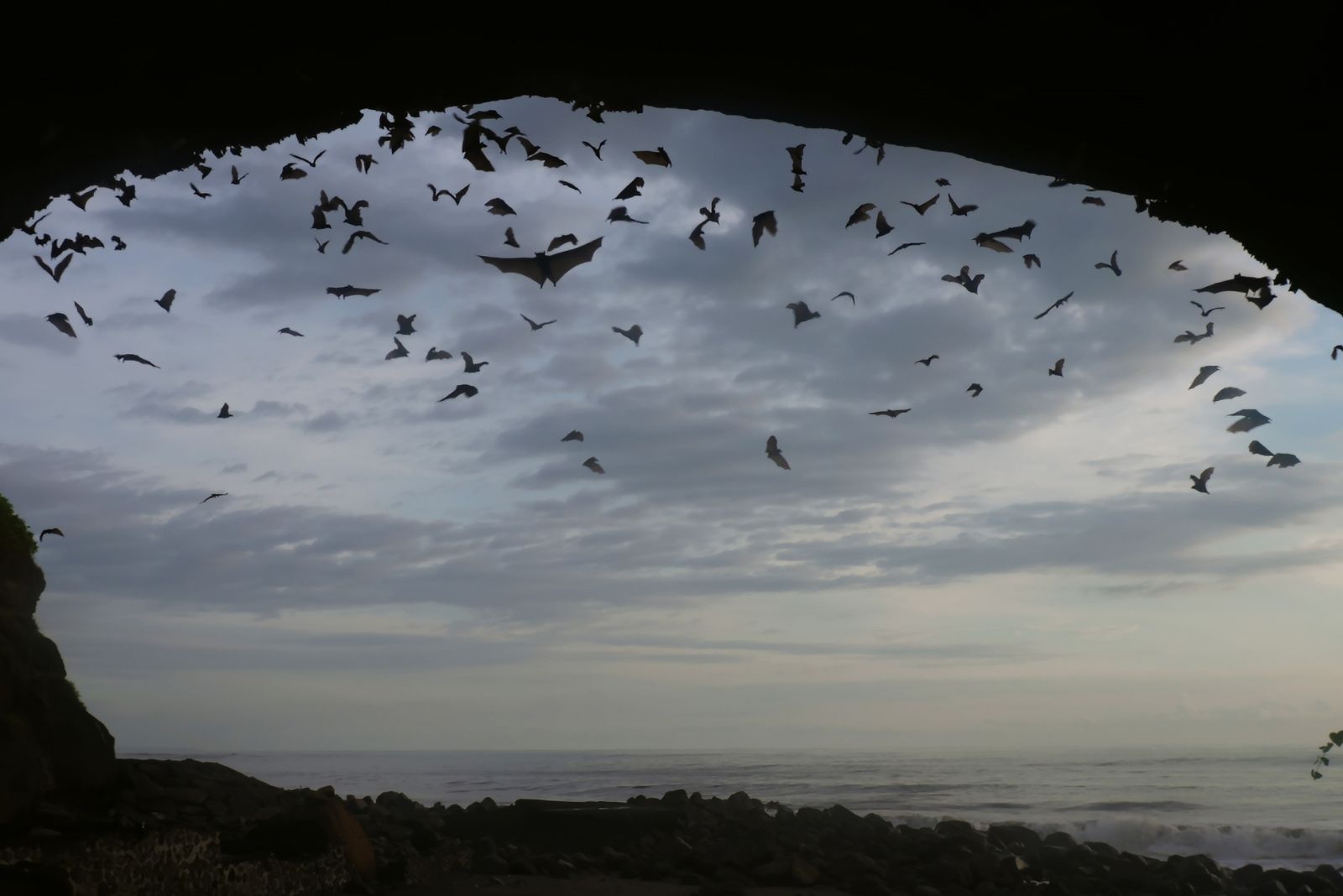
When the sun dips below the horizon, bats take to the skies, showcasing their incredible navigation skills through echolocation.
These tiny aerial acrobats emit high-frequency sounds and use the echoes that bounce back to create a mental map of their surroundings, allowing them to zip around effortlessly in the dark. Their nighttime adventures aren’t just fascinating—they’re essential.
Bats are nature’s pest control, consuming up to their body weight in insects every night, helping to keep mosquito populations in check and protecting crops from pests.
During the day, bats retreat to roosts in caves, trees, or even attics, hanging upside down in peaceful slumber. They’re so well-hidden that you’d be lucky to catch a glimpse of one unless they’ve been disturbed. And who can blame them for preferring the night?
There’s less competition with birds, cooler temperatures, and no need for sunscreen. Bats truly embrace the nocturnal life, balancing mystery and utility in every wingbeat.
2. Raccoons The Nocturnal Masked Bandits
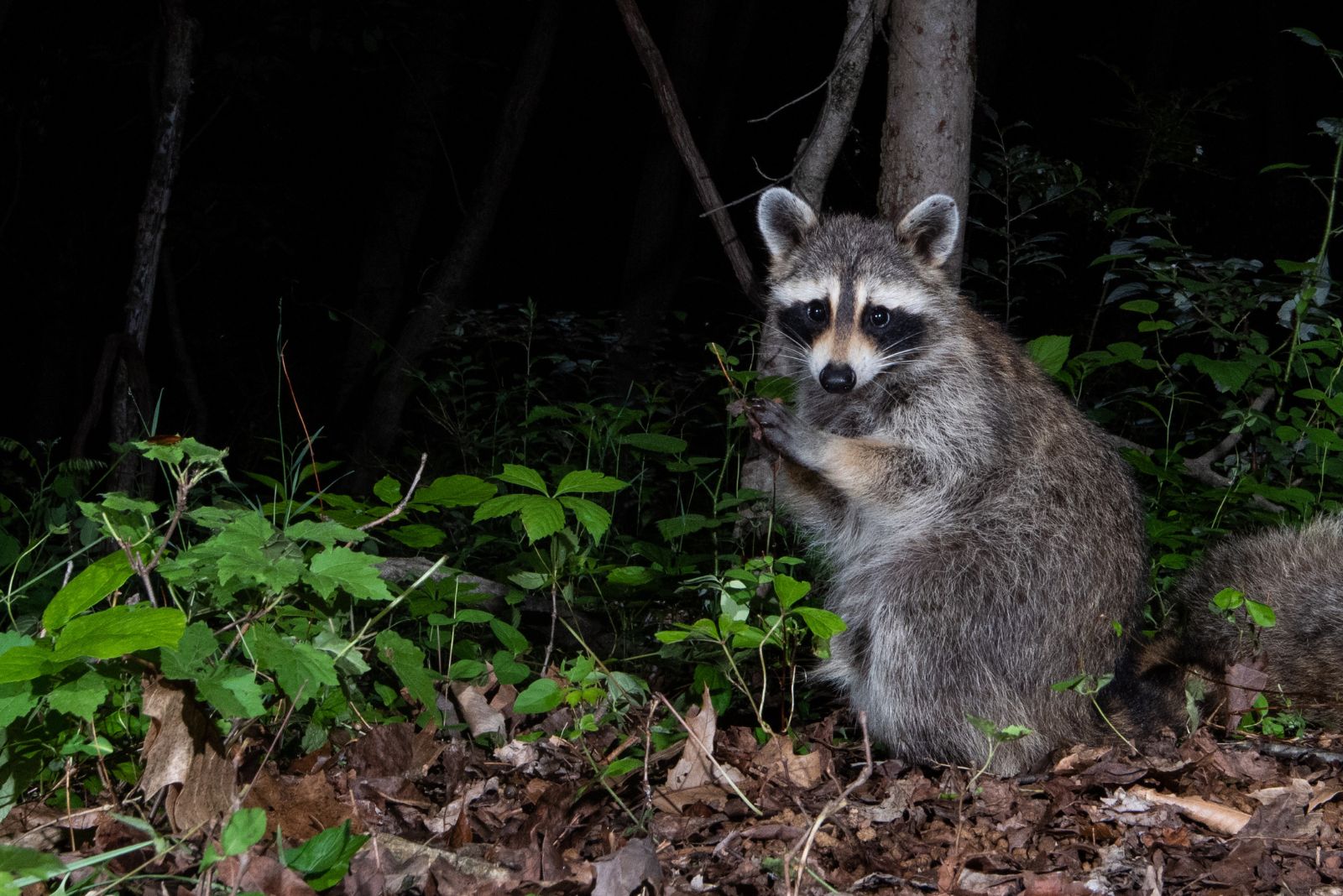
With their adorable black “masks” and surprisingly nimble paws, raccoons are the quintessential night-shift workers of the animal world.
As the sun sets, they begin their nightly escapades, scavenging for food wherever they can find it—whether it’s rummaging through your trash can or foraging for snacks in the forest. Their resourcefulness is unmatched, making them highly adaptable to both wild and urban environments.
Though primarily nocturnal, raccoons are opportunists and may occasionally venture out during the day, especially in cities where food can be found at all hours.
However, their nighttime antics are when they truly shine, as they sneak around with their “burglar masks” and mischievous demeanor.
They’re like nature’s adorable little bandits, charming us with their antics while proving that the cover of darkness is where they feel most at home.
3. Foxes Aka The Clever Hunters
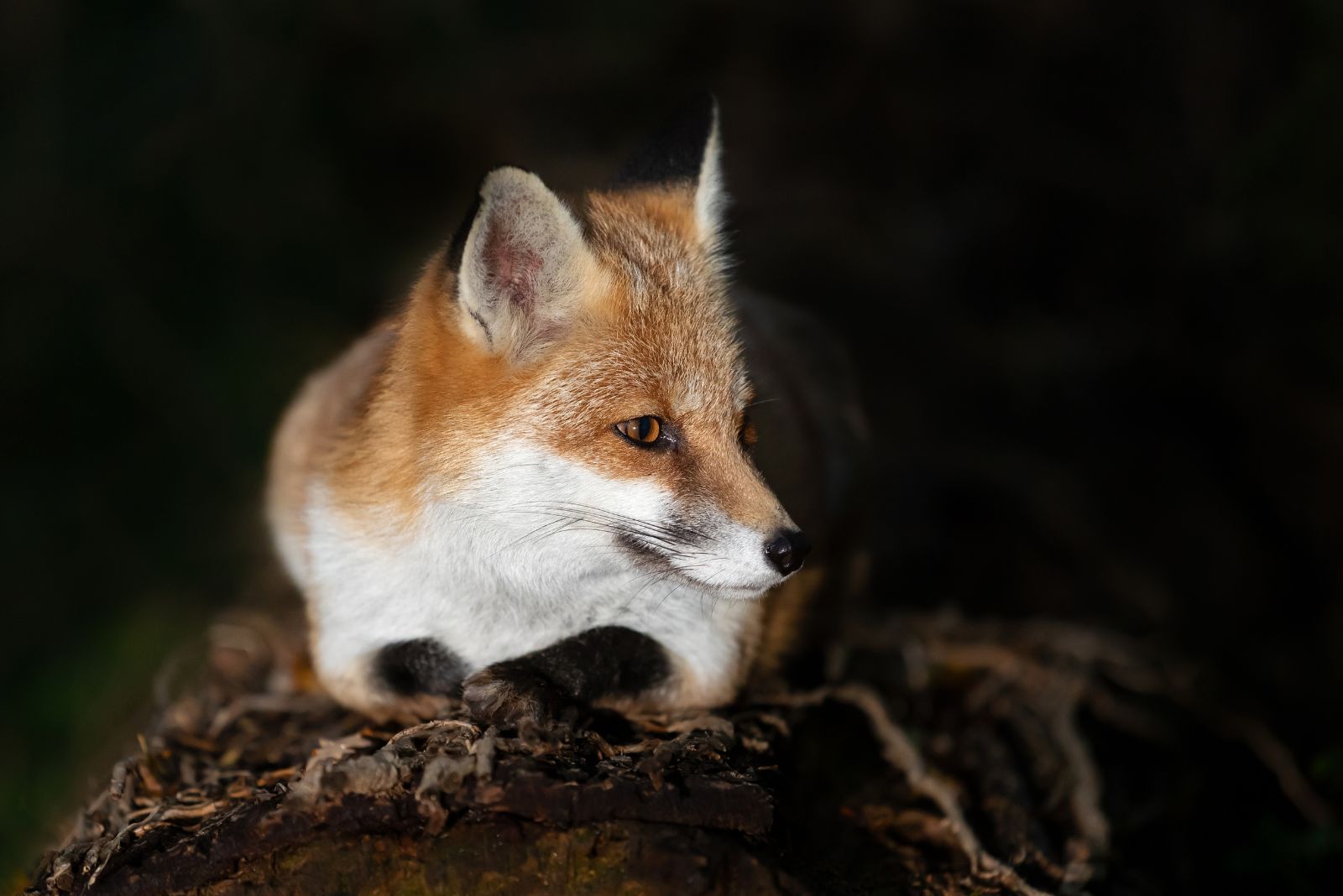
Foxes are known for their intelligence and adaptability, traits that make them excellent nocturnal predators.
While they’re technically crepuscular—most active during dawn and dusk—they lean heavily into their nocturnal habits, spending the quiet hours of the night hunting, exploring, and playing.
Their sharp senses and agile movements make them masters of stealth, capable of outsmarting their prey with ease.
Although it’s not impossible to spot a fox during the day, it’s a rare treat, like catching a glimpse of a celebrity. Their preference for the night is likely a combination of avoiding predators and capitalizing on their excellent low-light vision.
Whether darting through moonlit forests or urban backyards, foxes thrive in the shadows, embodying the mystique and cleverness of creatures that rule the night.
4. Owls, Nature’s Silent Stalkers
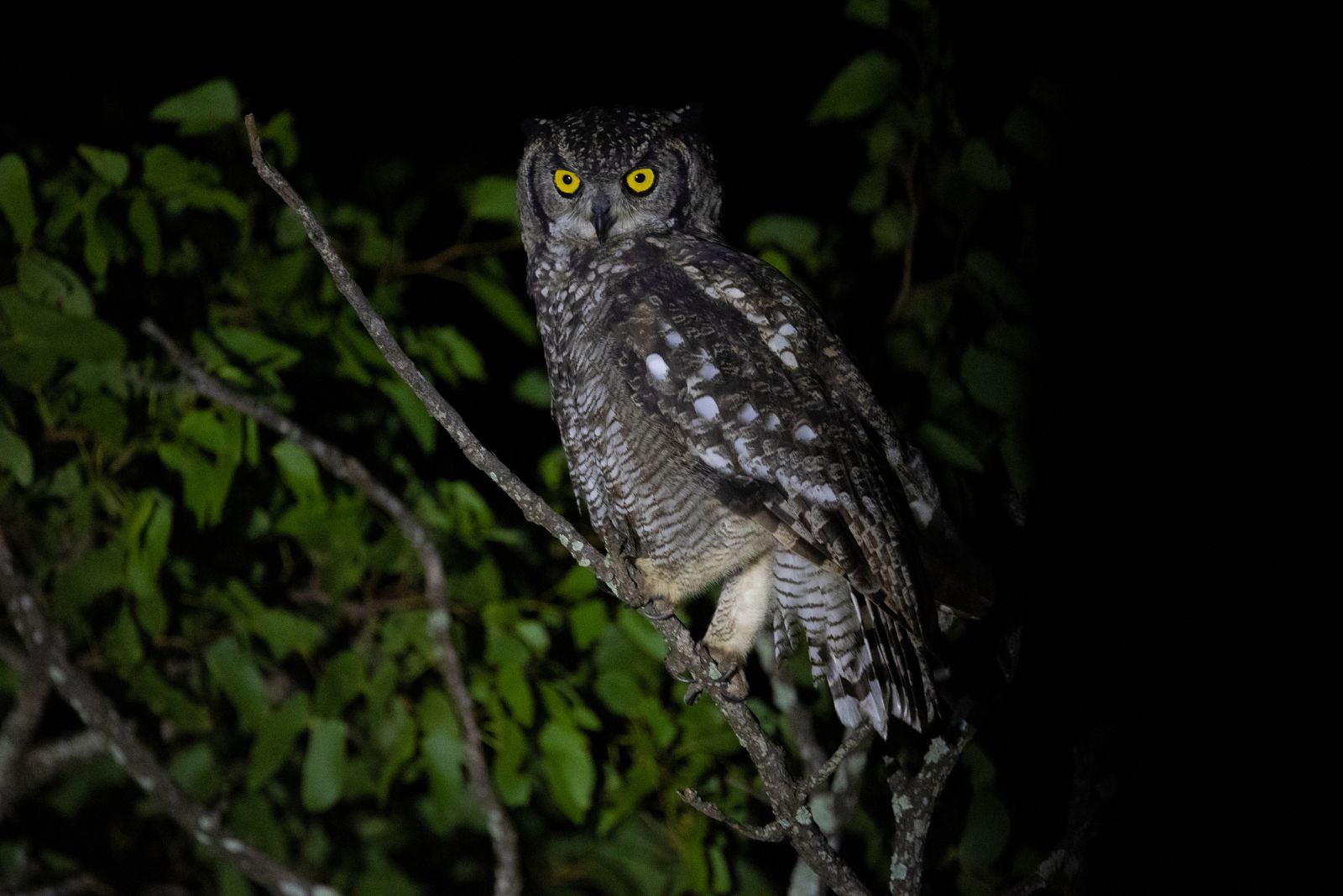
Owls are the undisputed rulers of the night sky, their silent flight and extraordinary vision making them some of the most efficient nocturnal hunters.
Their large eyes are specially adapted to capture light in the darkest conditions, while their ability to rotate their heads nearly 270 degrees ensures they never miss a thing. Add to that their razor-sharp talons and incredible hearing, and you’ve got a predator perfectly built for nighttime dominance.
While a few species, like the burrowing owl, occasionally break the rules and appear during the day, most owls stick to their nocturnal routines.
Their mysterious nature only adds to their allure, as they swoop silently through the darkness, embodying the stillness and secrecy of the night. And let’s be honest, imagining an owl sunbathing during the day feels almost absurd—they belong to the shadows, where their haunting beauty can shine.
5. Aardvarks – The Underground Foodies
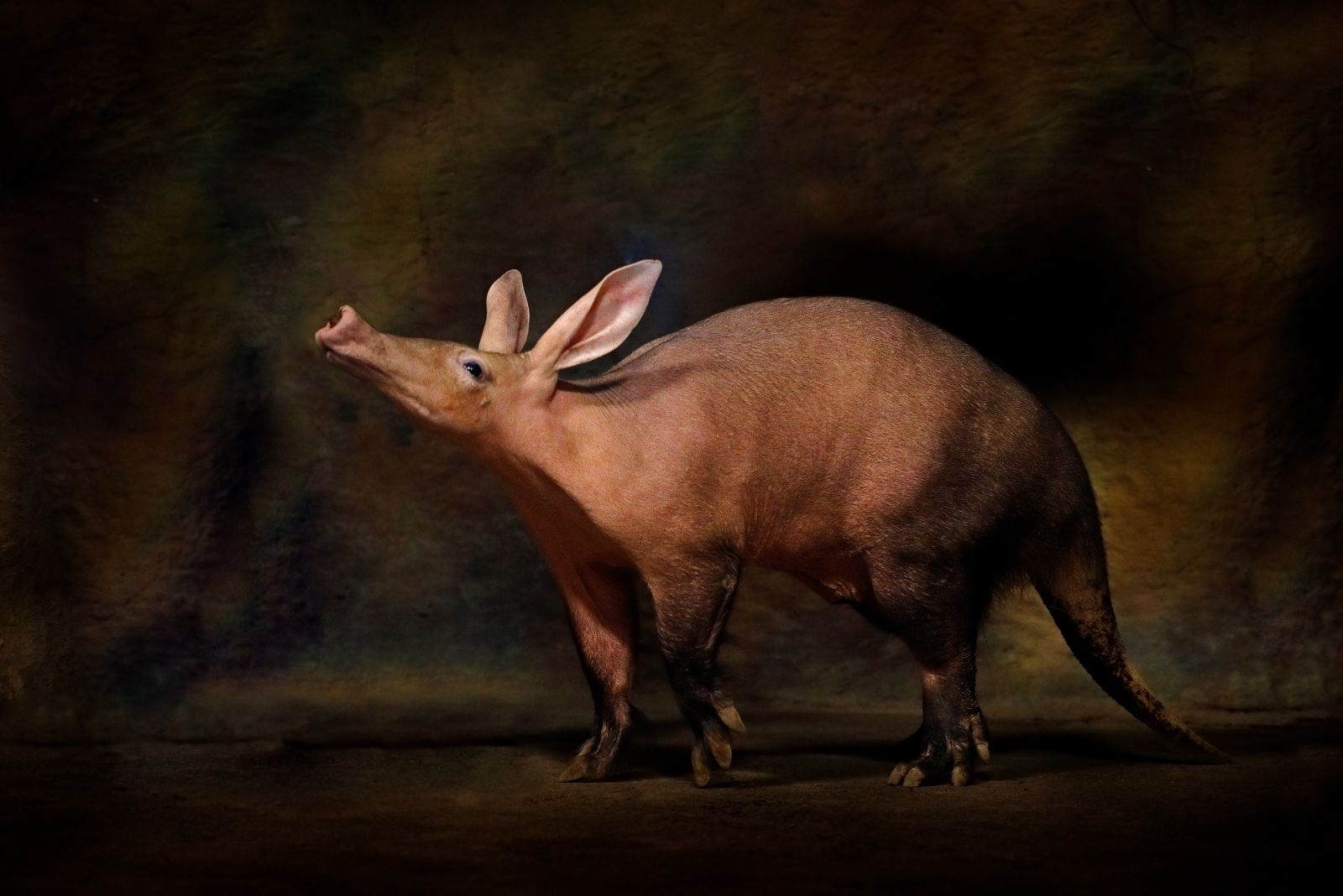
Aardvarks are one of nature’s most unique creations, with their long snouts and nocturnal habits making them both fascinating and elusive.
Emerging under the cover of darkness, these shy creatures use their incredible sense of smell to locate ants and termites, their primary source of food. Their powerful claws make short work of digging into ant hills and termite mounds, turning the night into a feast of crunchy delights.
Spotting an aardvark during the day is almost unheard of, as they prefer the safety and solitude of their underground burrows when the sun is up.
Their nocturnal nature helps them avoid predators and the scorching heat of their native African landscapes.
Aardvarks are like the paparazzi-dodging celebrities of the animal world, quietly ruling the night while remaining a rare sight during daylight hours.
6. Aye-Aye! The Night’s Little Weirdo
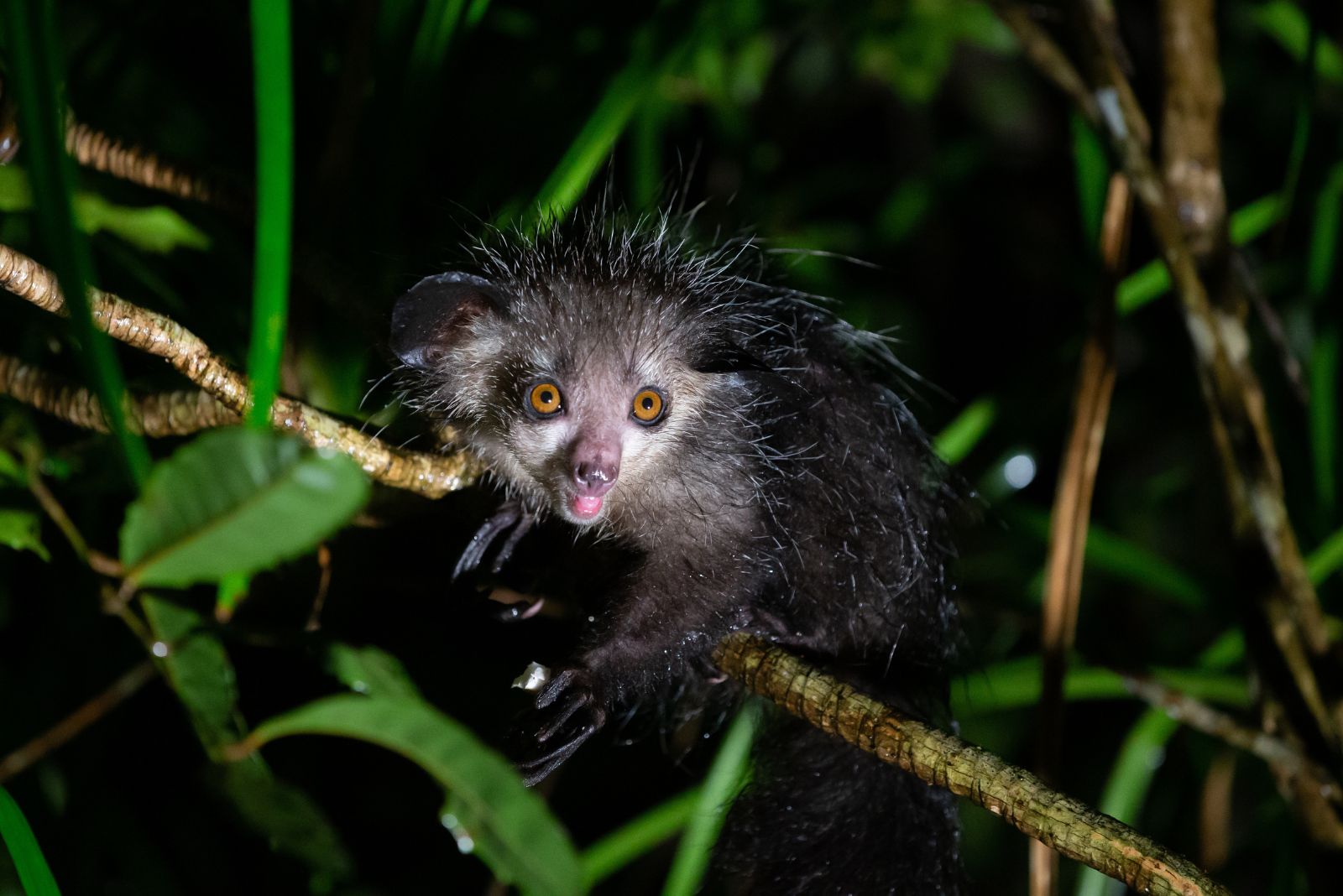
The aye-aye, native to Madagascar, is one of the most unusual and fascinating nocturnal animals you’ll ever encounter. With its large, glowing eyes and elongated middle finger, it’s perfectly equipped for nighttime foraging.
This quirky lemur spends its evenings tapping on tree bark to locate hidden insects, using its extraordinary hearing to detect movement beneath the surface. Once it finds its prey, that eerie finger comes into play, extracting insects with precision.
Strictly nocturnal, the aye-aye is rarely seen during the day, preferring to remain hidden in tree hollows or dense foliage. Its odd appearance has earned it a reputation as a creature of legend.
The aye-aye is proof that the night is full of surprises, showcasing how evolution can create specialized creatures that thrive in the darkness.
As I said, it’s strictly nocturnal, so you’re unlikely to catch it in the daylight – unless it’s starring in your nightmares. But don’t worry, it’s harmless… probably.
7. Badgers Are After Dark Diggers
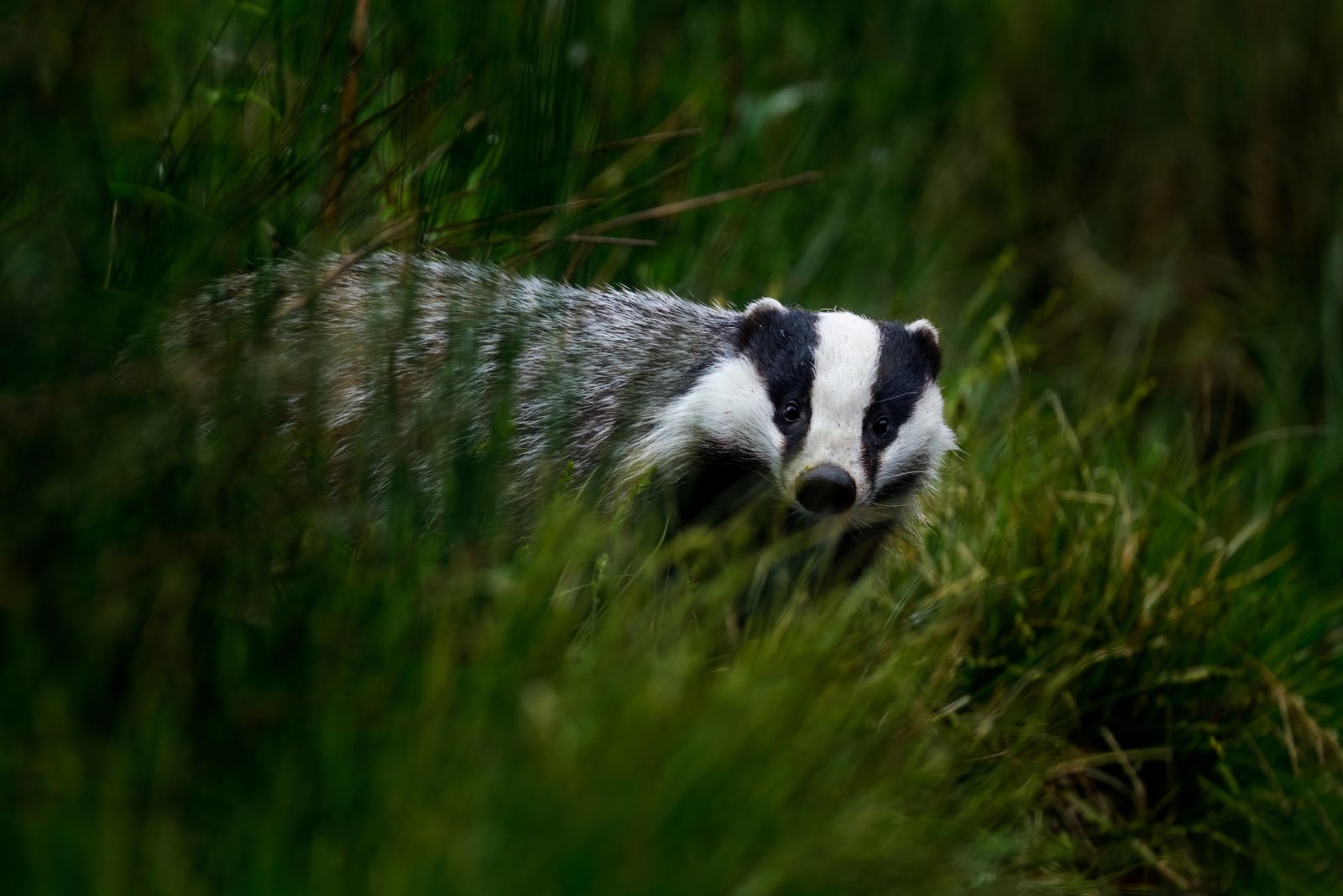
Badgers are rugged, nocturnal excavators who take full advantage of the night to forage for food and maintain their elaborate burrow systems.
Armed with powerful claws and stout bodies, these industrious creatures are the landscapers of the animal world, spending their nights digging for insects, small mammals, and roots.
Their nocturnal habits keep them out of sight during the day, as they prefer the safety and comfort of their underground dens.
Though sightings during daylight hours are rare, they’re not impossible. A badger spotted in the daytime is likely on an urgent mission—whether relocating to a new burrow or defending its territory.
Their secretive lifestyle and after-dark antics make them a symbol of nocturnal determination, embodying the work ethic and resourcefulness needed to rule the night.
8. Hedgehogs, The Nighttime Wanderers
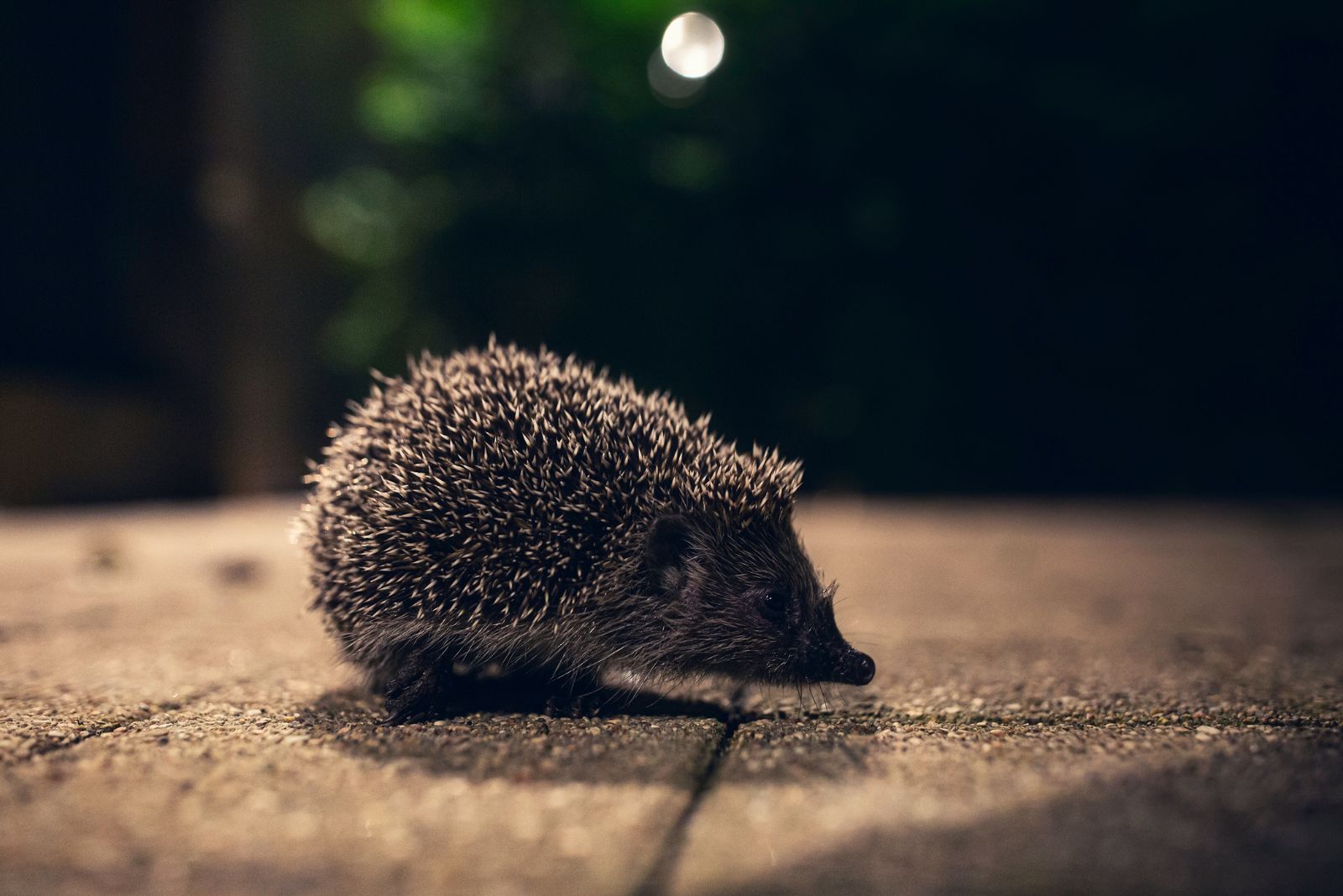
Hedgehogs are the adorable nomads of the night, spending their evenings scurrying through gardens and forests in search of insects, worms, and other tasty morsels. With their tiny legs and spiky coats, they’re surprisingly active, often covering large distances during their nocturnal wanderings.
Their excellent sense of smell helps them locate food in the dark, making them highly efficient nighttime foragers.
By day, hedgehogs retreat to their nests, often hidden under piles of leaves or dense vegetation. Spotting a hedgehog in the daylight is rare and could indicate that they’ve been disturbed or are unwell.
Their nocturnal lifestyle not only protects them from predators but also adds to their charm, as they quietly go about their business under the stars.
Hedgehogs are a perfect reminder of the gentle, unseen activity that makes the night so enchanting.
9. Tarsiers: Wide-Eyed Night Stalkers
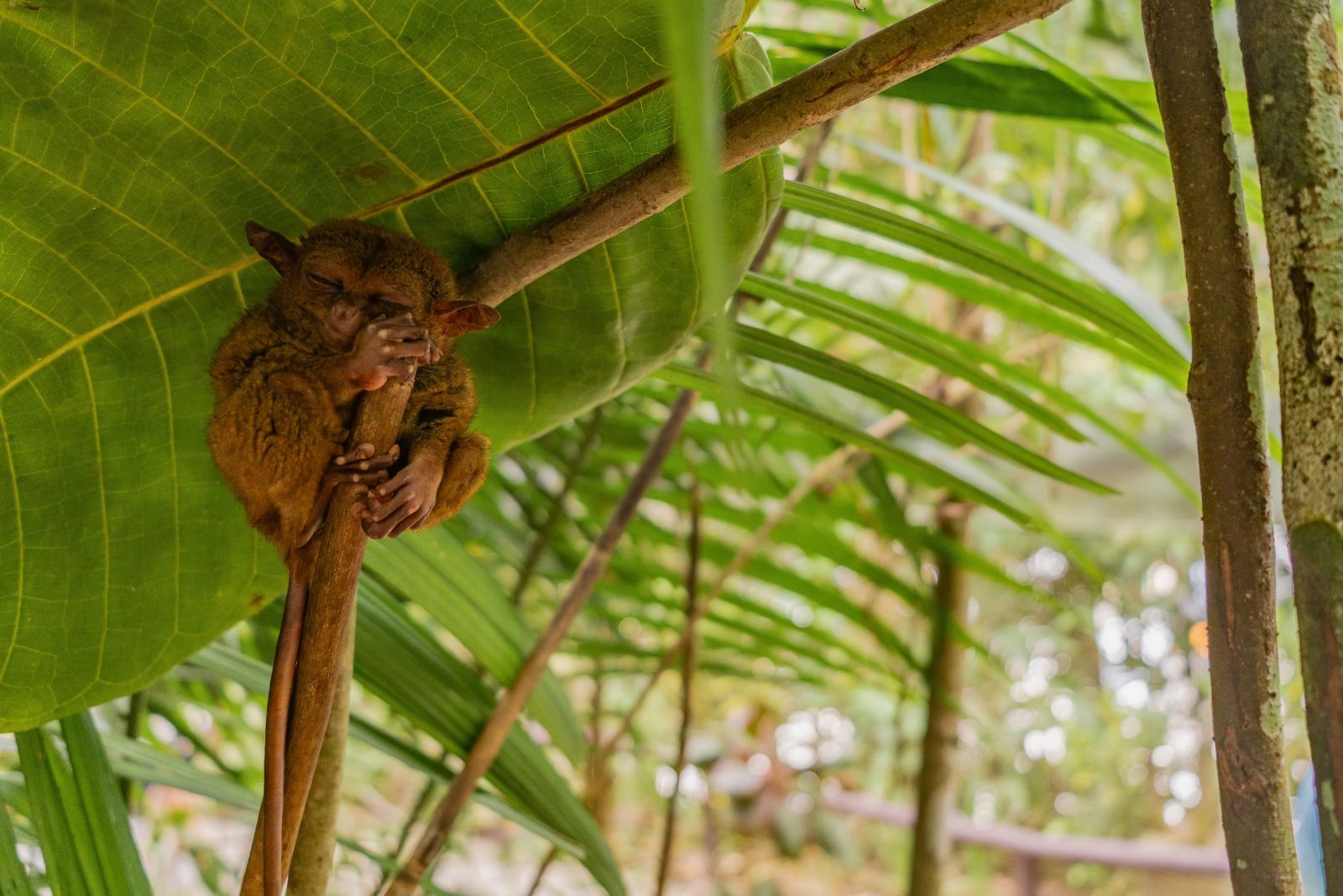
Tarsiers are the ultimate night dwellers, with their enormous, almost otherworldly eyes perfectly adapted for life in the dark. These tiny primates, native to Southeast Asia, are so attuned to nocturnal living that their eyes are among the largest relative to body size of any mammal.
Their massive eyes gather as much light as possible, giving them exceptional night vision, which they use to hunt for insects and small prey in the cover of darkness. By day, tarsiers retreat into dense vegetation or tree hollows to rest, remaining nearly invisible to the casual observer.
Their nocturnal habits are further complemented by their incredible agility. Tarsiers are expert climbers and leapers, using their long limbs to spring between trees with precision as they stalk their prey.
Their ability to silently navigate the jungle canopy at night makes them elusive and difficult to spot.
With their eerie calls echoing through the night and their shadowy movements, tarsiers embody the mysterious allure of nocturnal creatures, rarely seen during daylight hours but thriving in the nighttime world.
10. Fireflies Are Like Nature’s Nighttime Lanterns
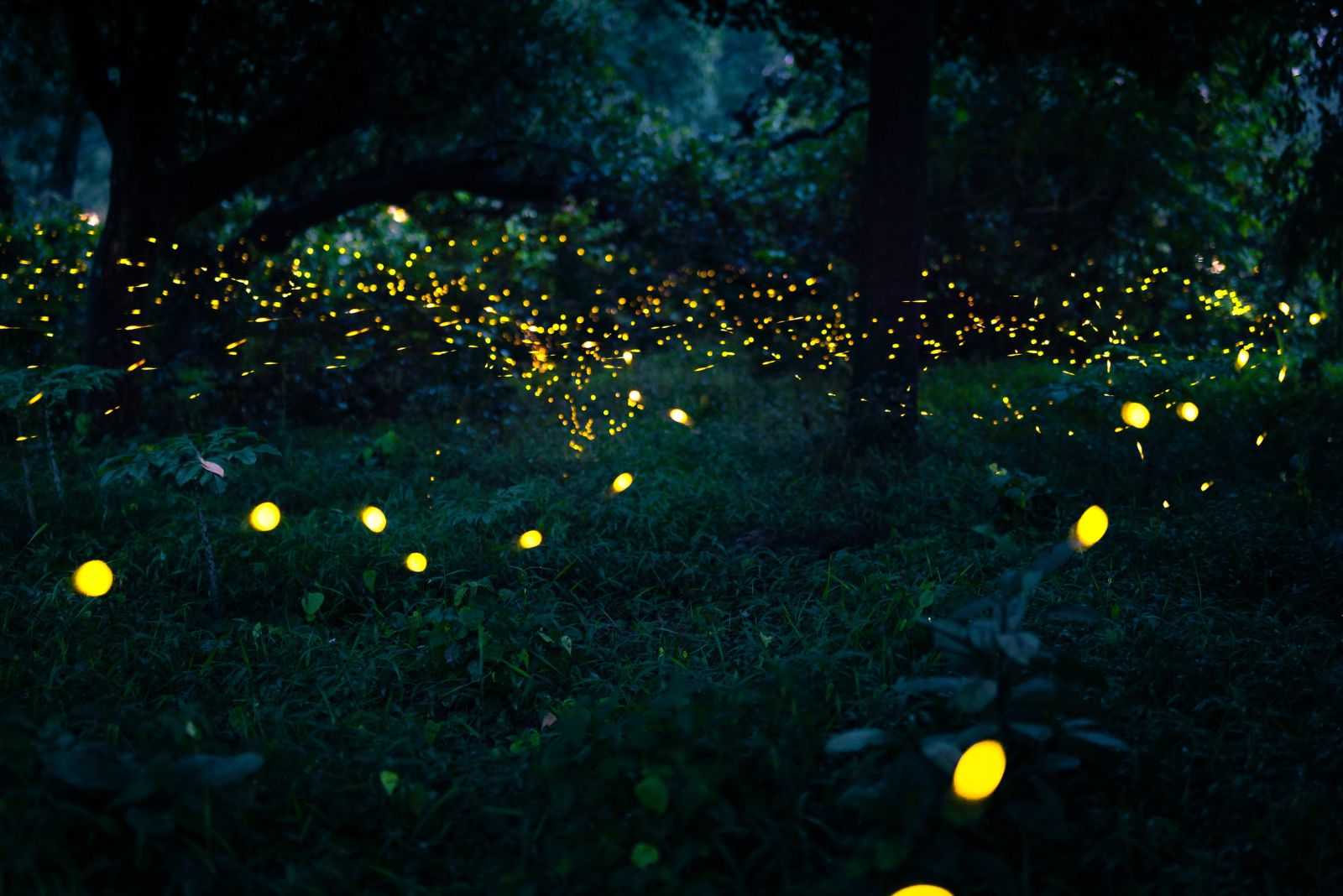
Fireflies are the quintessential rulers of the night, lighting up the darkness with their enchanting bioluminescent glow.
These glowing insects create one of nature’s most magical spectacles, using their light to communicate, attract mates, and even ward off predators. Each species of firefly has its own unique flash pattern, turning their nighttime displays into a form of silent language that often goes unnoticed by day.
Fireflies are typically found in forests, fields, or near water, where their light shows transform the night into an ethereal wonderland.
During the day, fireflies are inconspicuous, hiding among vegetation and blending into their surroundings. Their daytime appearance is unremarkable compared to their nighttime brilliance, making them a true treasure of the dark.
The bioluminescence of fireflies is not just beautiful—it’s also efficient, producing light without generating heat. This adaptation allows them to thrive in the cooler, safer environment of the night, where their glow stands out against the darkness.
Fireflies are a reminder of the hidden wonders of the natural world, revealing their captivating beauty only under the cover of night.


